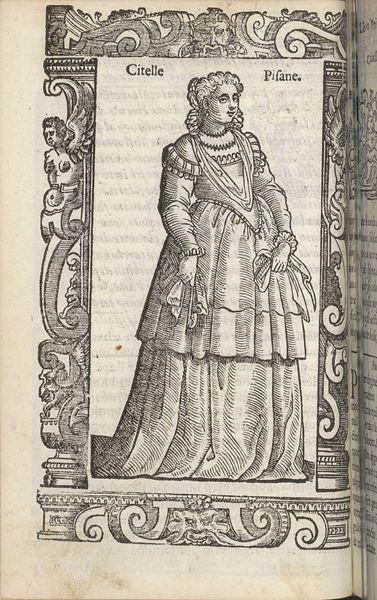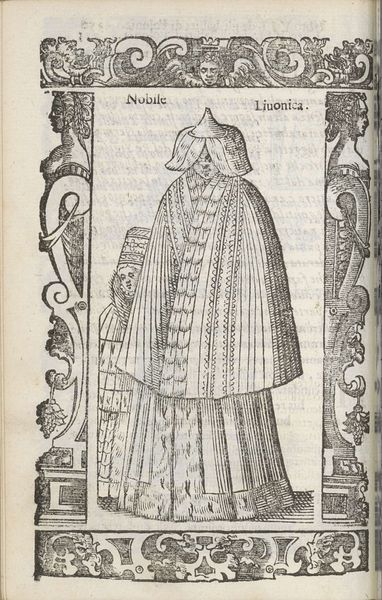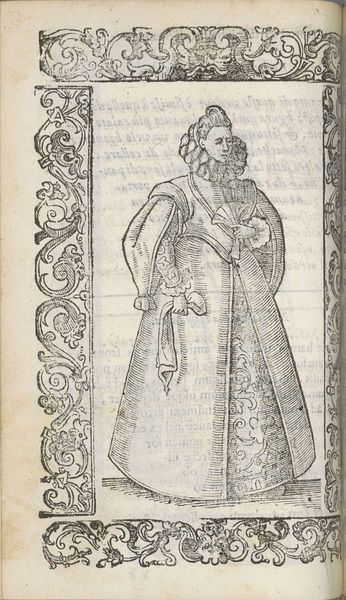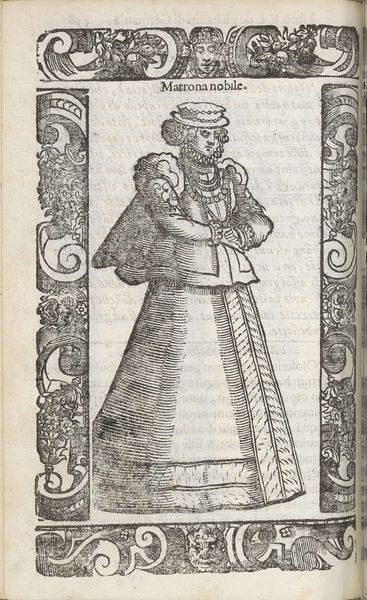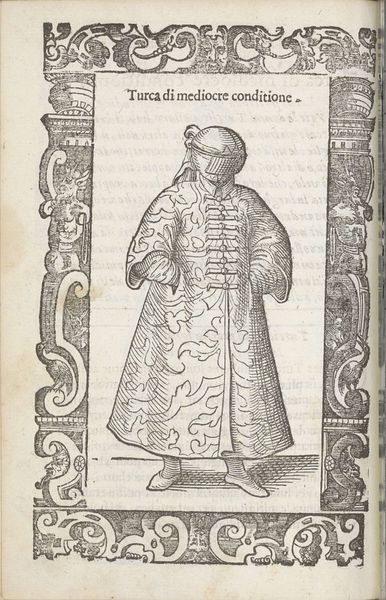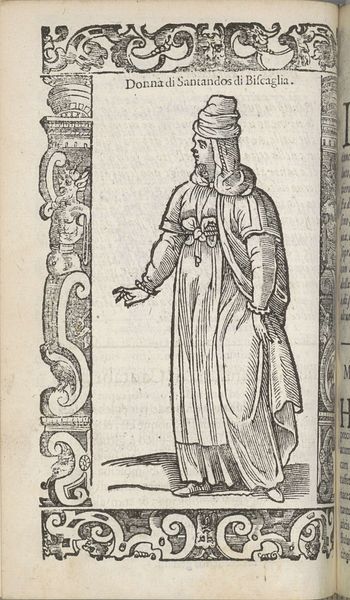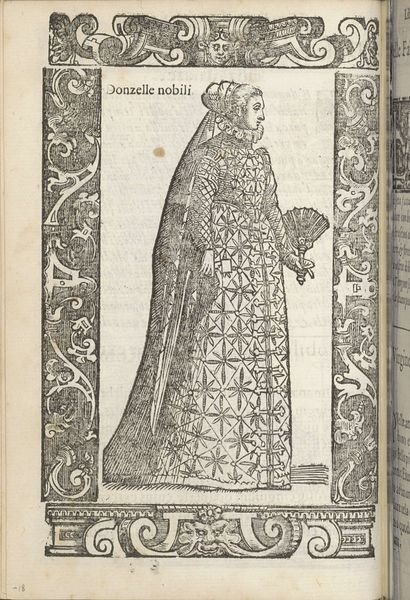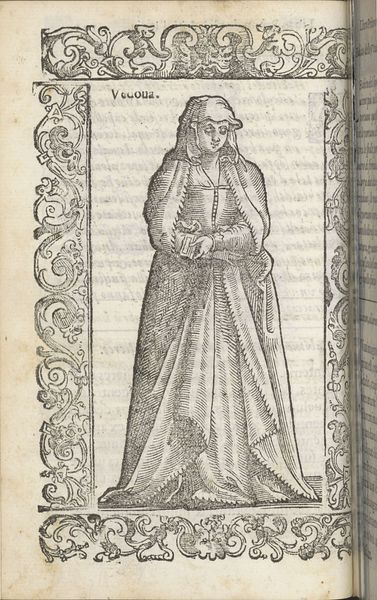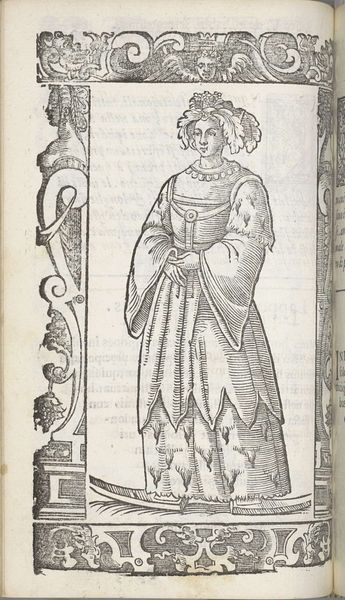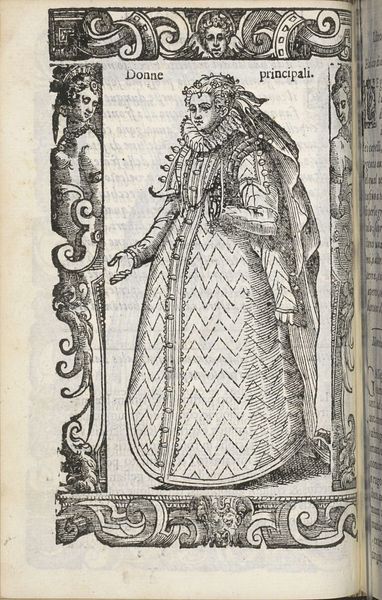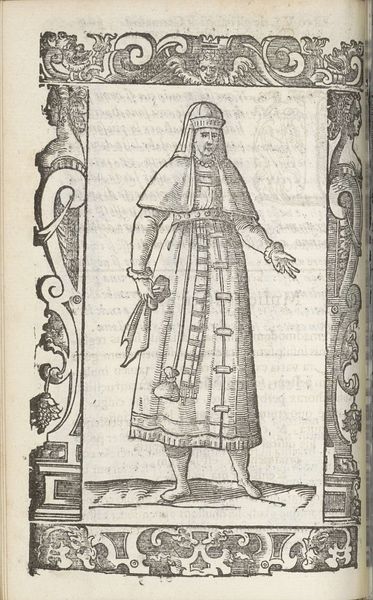
drawing, paper, ink, engraving
portrait
drawing
aged paper
toned paper
pen sketch
sketch book
mannerism
paper
personal sketchbook
ink
sketchwork
pen-ink sketch
pen work
sketchbook drawing
history-painting
sketchbook art
engraving
Dimensions: height 167 mm, width 125 mm
Copyright: Rijks Museum: Open Domain
Editor: So, here we have "Lottharina," a pen and ink drawing from 1598 by Christoph Krieger. It’s rendered on what looks like aged paper. The figure's dress has this striking, almost architectural quality, made up of large blocks. How do we interpret the choices the artist made with these materials? Curator: From a materialist perspective, it's vital to examine the *making* here. Krieger's choice of readily available materials, pen and ink on paper, points to a production meant for wider circulation, perhaps even a form of proto-fashion plate for a burgeoning mercantile class. The engraving allows for multiples, shifting its status beyond 'high art' and into the realm of consumable goods. Notice also how the paper itself is 'toned' - suggesting perhaps not necessarily age, but a deliberate selection that affects how light interacts with the ink, further altering how one consumes this representation of 'Lottharina.' How do you think the readily available materials challenge high art in its time? Editor: That's interesting. I hadn't thought about the distribution aspect, and more how the choices allow to represent textiles, such as to offer the impression of heavy material or ornate embellishment. What does that suggest about who “Lottharina” represents and where would have that costume belonged to in its time? Curator: The figure's garb, carefully documented, points toward a desire to capture social status through sartorial display. The labor invested in producing and consuming such a costume, and in depicting it through these accessible means, suggests the intersection of material wealth and social aspiration, the tensions between high-end craft production and wider consumer accessibility. It all indicates Krieger's awareness of his market. What else does it makes you wonder about? Editor: This focus on accessible materials opens my eyes to the connection between labor, the production process and art's consumption. I'm starting to understand more clearly how studying the art in light of these factors can unlock all sorts of historical information! Curator: Exactly. This kind of close attention to materials and context shifts how we define 'art' and how we think of historical processes, right?
Comments
No comments
Be the first to comment and join the conversation on the ultimate creative platform.
